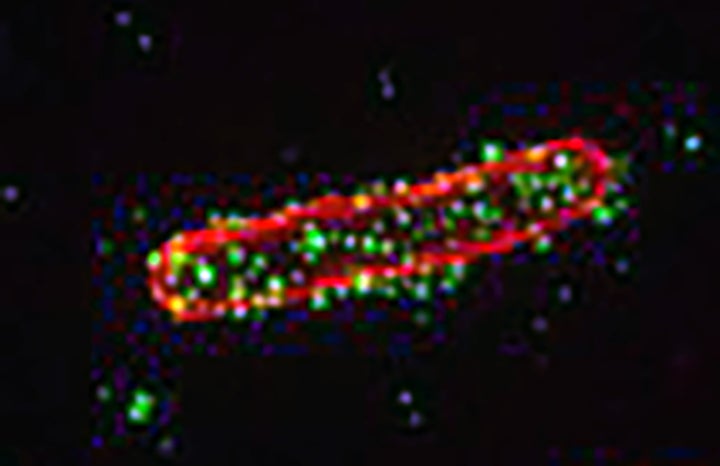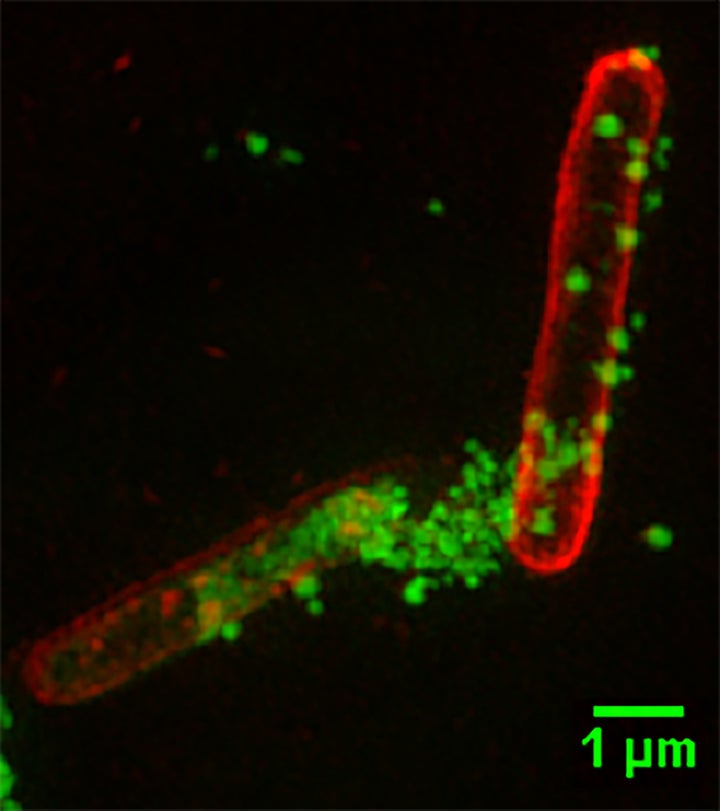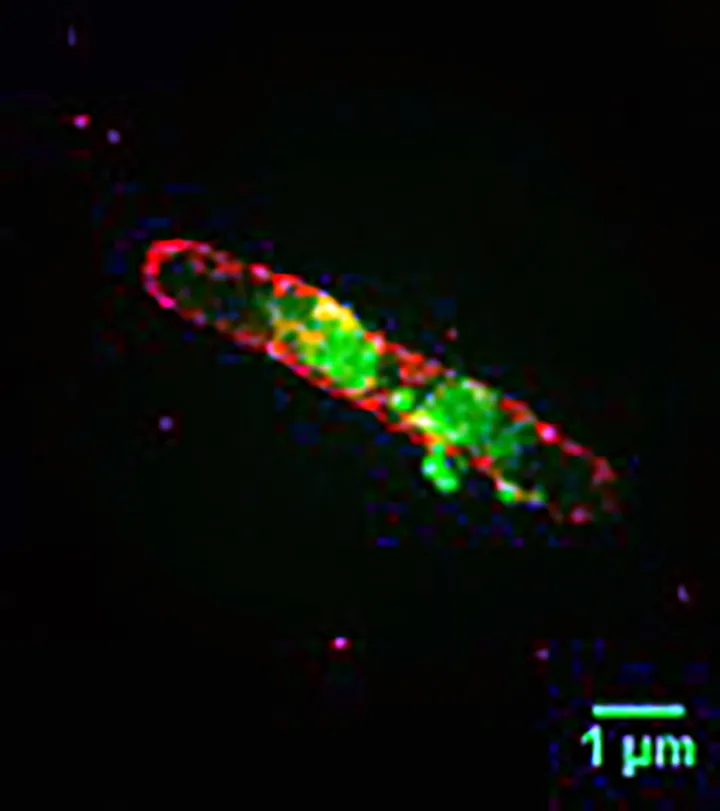Antibiotic-resistant ‘superbugs’ could soon be a thing of the past after a team of Australian scientists discovered a protein that literally rips them apart.
Called ‘structurally nanoengineered antimicrobial peptide polymers’ (or SNAPPs, for short), these star-shaped molecules destroy bacteria by tearing open their cell walls – potentially a major breakthrough in the treatment of diseases which have mutated to resist the effects of antibiotics, dubbed ‘superbugs’.

Effectively the research using polymers could replace existing antibiotic treatments. As these newly released images show the tiny ‘green’ polymers surround the bacteria – in red - before destroying it.
Other black and white microscopic images released by the research team show the dramatic moment the bacteria appears to almost explode as the polymers attack it.
Professor Greg Qiao, from the University of Melbourne’s Department of Chemical and Biomolecular Engineering, said: “It is estimated that the rise of superbugs will cause up to ten million deaths a year by 2050. In addition, there have only been one or two new antibiotics developed in the last 30 years.”
The study, published in the Nature Microbiology journal, was carried out by Professor Qiao and PhD student Shu Lam, working with a team of other University of Melbourne researchers.
Speaking today (TUES) Shu said: “This discovery could potentially be developed as an antibiotic replacement for treating bacterial infections that do not respond to currently available antibiotics anymore.

“We are still at a preliminary stage and need to perform more detailed/comprehensive assessments on the star peptide polymers.
“A more thorough understanding of how these molecules work in killing bacteria, and whether they work against different bacterial infections.”
She said it was still too early for clinical trials
The team found that, as well as being highly effective against superbugs, SNAPPs are non-toxic to the body, with tests showing that the dosage would need to be increased by a factor of greater than 100 to pose any risk to patients.

As well as being highly effective against superbugs, SNAPPs are non-toxic to the body, with tests showing that the dosage would need to be increased by a factor of greater than 100 to pose any risk to patients.
Furthermore, superbugs showed no signs of resistance against these peptide polymers. The team discovered that their star-shaped peptide polymers can kill bacteria with multiple pathways, unlike most antibiotics which kill with a single pathway.
They believe that this accounts for the superior performance of the star-shaped peptide polymers over antibiotics.
One of these pathways includes ‘ripping apart’ the bacteria cell wall. While more research is needed, Professor Qiao and his team believe that their discovery is the beginning of unlocking a new treatment for antibiotic-resistant pathogens.